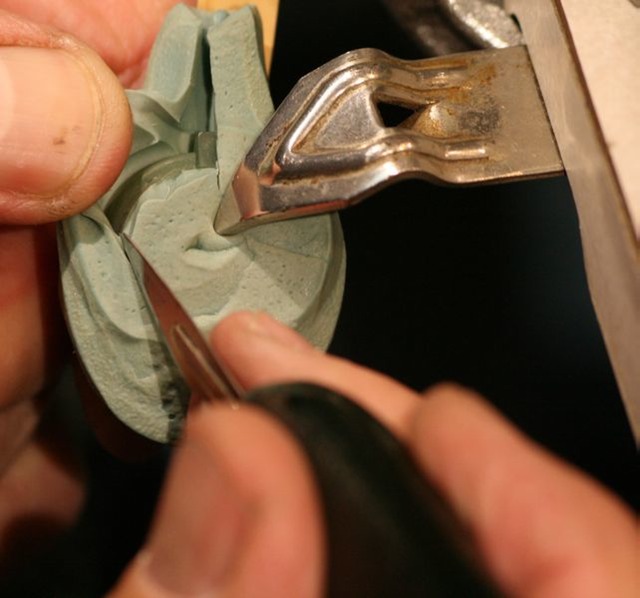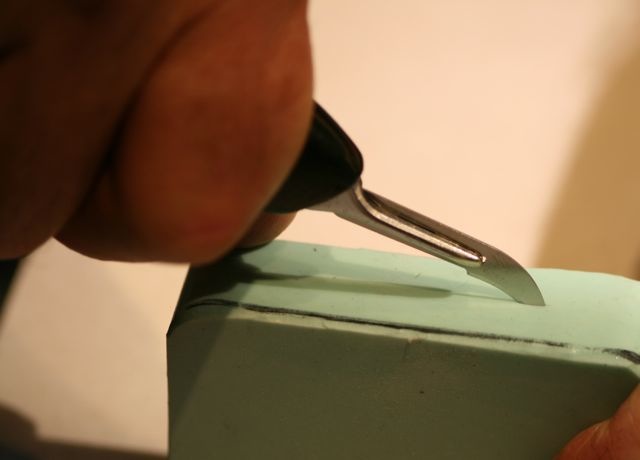Ever wonder which blade is best? Me too!
Then I found out that they are both the best for making different cuts.
I use the curved scalpel for about 90% of the cutting that I do, and the straight scalpel for the other 10%.
The curved scalpel is great for making 'choppy water' cuts. That is how these many tiny locks or ripples in the molds are cut. The curved blade is also good for cutting larger, flat areas smoothly and quickly. It can be pulled carefully through a large area leaving a wide cut.
The straight scalpel is excellent for making precise cuts in narrow areas. Use it to slice bits of mold rubber that are bordered by more mold rubber that you don't want to cut. Often, using a curved blade to do this will allow you to cut not only with the tip of the curved blade, but also with the opposite end of the curve. It is better to avoid extra cuts in a mold.
I like to hold the straight scalpel blade handle like I'm holding a pen. I grip the handle with my thumb, index, and middle fingers. . The palm of the hand is below the scalpel handle. Here is what I see when cutting the inside section of a mold-in-mold. The mold is made with Nicem low temperature vulcanizing silicone rubber.

Figure 1.
I like to hold the curved scalpel blade handle like I'm holding a butter knife, or file. The thumb is peeking out just below the scalpel handle in this image. The index finger is closest to the blade. The middle finger is behind it on the left side of the image. The palm of the hand is above the scalpel handle. I'm cutting into the outside edge of a mold made with Castaldo VLT. It is a silicone rubber that vulcanizes at 160F! I bake green carving wax in this rubber just like in the Nicem rubber. See figure 2.

Figure 2.
Next article will be basic suggestions for choosing your jewelry mold rubbers.